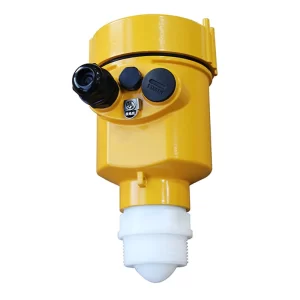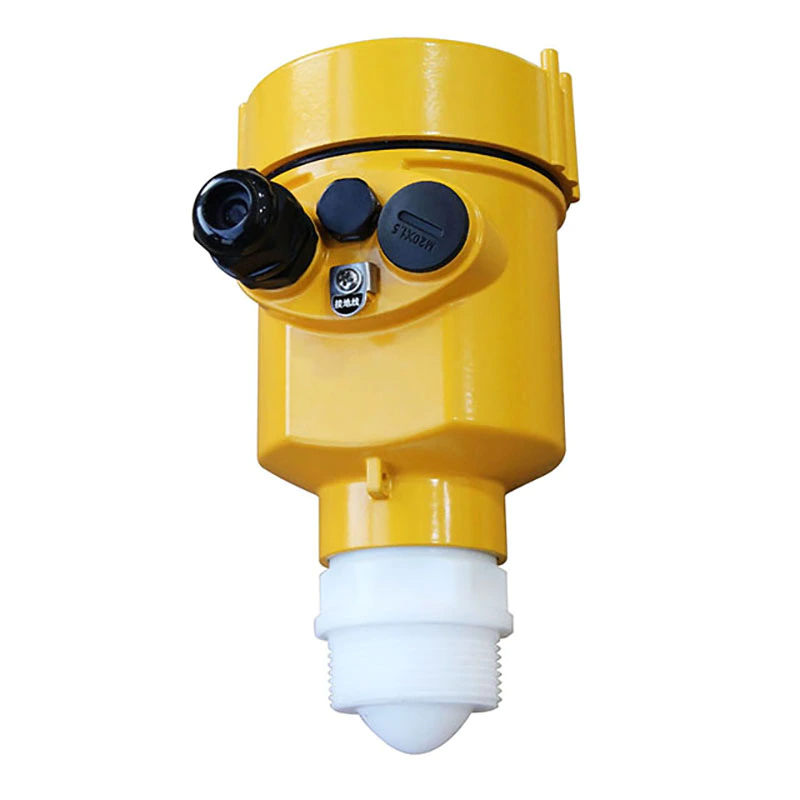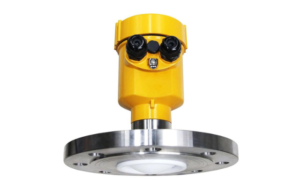120GHz Radar Level Transmitter


YURA 2301 120GHz Radar Level Transmitter
Application: Liquid
Measuring Range: 0.05m~30m
Protection Grade: IP67
Accuracy: ±2mm
Frequency: 123GHz
Process Pressure: (-0.1~0.3) Mpa
Process Temperature: -40℃~80℃
Process Connection: G1½ A/1½NPT thread/flange ≥ DN50
Explosion proof certification: ExiaⅡCT6Ga/ExdⅡCT6Gb
Outer Covering: Aluminum/plastic/stainless steel
Power supply: Two-wire(DC24V)/Four wire(DC12V~24V)/Four-wire(AC220V)
Signal output: 2-wire 4… .20mA / HART protocol / 4-wire 4… .20mA /RS485 Modbus
Payments: TT, Paypal, Credit card, Western union
Shipping ways: Express(DHL,Fedex,TNT,EMS,UPS)/Air/Sea
Overview
YURA 2301 FM Radar level transmitter is a 120GHz FM radar type level measuring instrument with a measuring distance of up to 30 meters. The antenna is further optimized for processing and the new fast microprocessor allows for higher speed signal analysis and processing, making the instrument available for measurement of high temperature and high pressure and other environmental liquids
Product Principle
The general principle of frequency modulated continuous wave radar level meter is that the radar emits electromagnetic waves at the top of the tank, and the electromagnetic waves are received by the radar after hitting the medium and reflected. Because the speed of light C and FM slope K are known, so the frequency difference δ f is estimated, and the distance R of the material surface at the radar installation position can be obtained, and then the height of the material level is obtained by subtracting the spatial distance from the radar to the material surface (referred to as the empty height) from the known total height of the tank.

Protection Grade
This instrument fully meets the requirements of protection class IP66/67. Please make sure that the cable sealing head is waterproof. As shown How to ensure that the installation meets the requirements of IP67. Please make sure that the sealing head is not damaged. Please make sure that the cable is not damaged. Please ensure that the cable used meets the requirements of the electrical connection specification. Before entering the electrical connection, bend the cable downwards to ensure that water does not flow into the housing, see ① Please tighten the cable sealing head, see ② Please plug the unused electrical connections with blind plugs, see

Product Specification
Measuring medium: liquid
Measuring range: 0.05m~30m
Process connection: G1½ A/1½NPT thread/flange ≥ DN50
Process temperature: -40~80℃
Process pressure: -0.1~0.3MPa
Accuracy: ±2mm
Protection level: IP67
Frequency range: 123GHz
Power supply: Two-wire(DC24V)/Four-wire(DC12V~24V)/Four-wire(AC220V)
Explosion-proof grade: Exia ⅡC T6 Ga / Exd IIC T6 Gb
Housing: Aluminum / Plastic / Stainless steel
Signal output: 2-wire 4…. .20mA / HART protocol / 4-wire 4…. .20mA /RS485 Modbus
Appearance Of Size

Technical Parameters
| Process connection | Flange | |||
| Material | 304 stainless steel, PP | |||
| Shell | Seal between housing and housing | Silicone Rubber | ||
| Shell window | Polycarbonate | |||
| Ground terminal | Stainless steel | |||
| Supply voltage | four-wire system | Standard | (12~24)V DC | |
| Power consumption | max80mA DC24V/2W | |||
| Allow ripple | <100Hz | Uss<1V | ||
| (100~100K)Hz | Uss<10mV | |||
| Shell | (198~242)V AC | four-wire system | ||
| 100V AC | four-wire system | |||
| Cable parameters | Cable entry/plug | 1 M20x1.5 cable entry | ||
| 1 blind plug M20×15 | ||||
| Ground terminal | Conductor cross section 2.5mm2 | |||
| Output parameters | output signal | (4~20)mA/RS485Modbus | ||
| Resolution | 1mm | |||
| Fault signal | Current output unchanged; 20.5mA; 22mA; 3.9mA | |||
| Integration time | (0~20)s, adjustable | |||
| Blind spot | 0.1m/0.2m/0.3m | |||
| Maximum measurement interval | 150 meters | |||
| Measuring distance | About 1 second (depending on parameter settings) | |||
| Adjust the time | About 1 second (depending on parameter settings) | |||
| Adjust time, working storage and transportation temperature | (-40~80)℃ | |||
| Process temperature | YURA2301 | -40~80℃ | ||
| YURA2302 | -40~110℃ | |||
| YURA2303 | -40~110℃ | |||
| YURA2305 | -40~200℃ | |||
| YURA2301 | -40~110℃ | |||
| Relative humidity | <95% | |||
| pressure | Max2.5 MPa | |||
| Shockproof | Mechanical vibration 10m/s2, (10~150)Hz | |||
Instrument Linearity

Installation Requirements
When installing the instrument, avoid installing it above the inlet, and try to avoid all kinds of objects that affect the signal, such as stirring paddles, etc.

Under extremely complicated working conditions, the instrument can work normally if there is no obstacle in the area of 500px radius with the radar installation point as the









